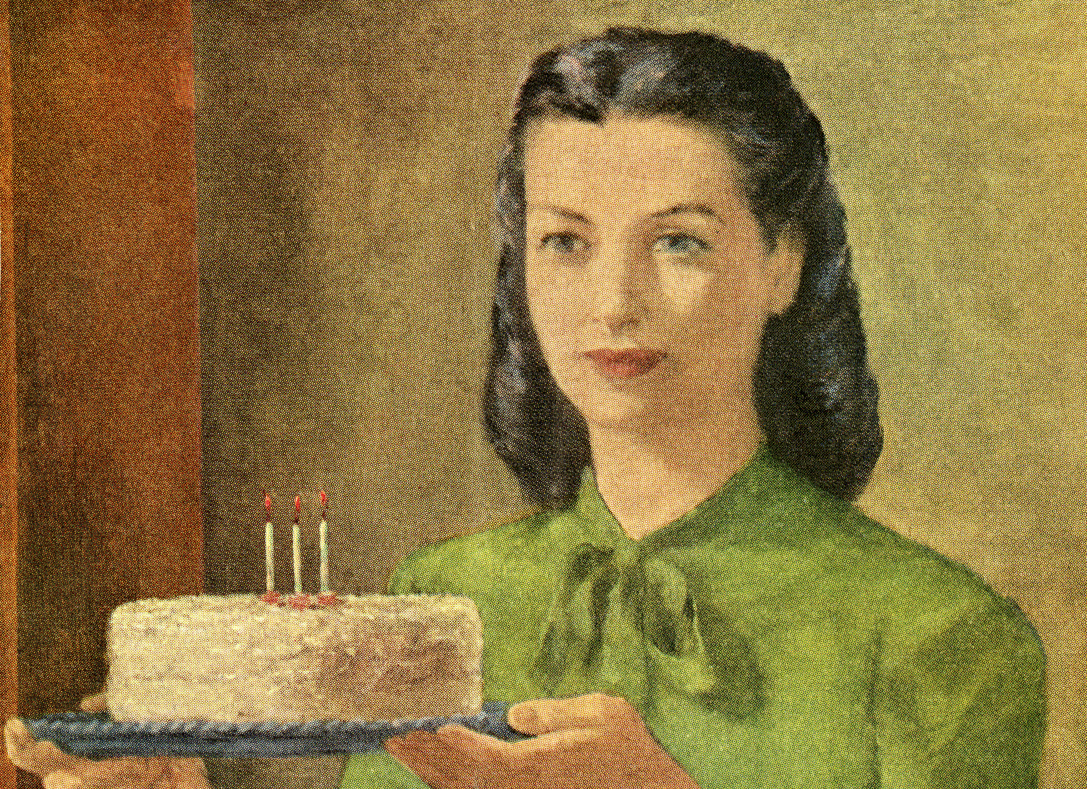When it comes to the baking world, few things seem as impressive as being able to decorate a cake in the most elaborate of ways. Just search “cake decorating” on social media or online, and you’ll find a ton of incredible images that show decorated cakes that seem almost too amazing and intricate to be real (but they are!). Today, cakes like these are extremely popular, and it’s hard to go to a birthday party, a wedding, or any big event without seeing an elaborate cake on display.
Still, while this may seem like a relatively new trend (and it kind of is), cake decorating is something that has been happening for a long time… just in different ways. Cakes have been getting decorated for many years now. It’s just that what has been done has changed, and it’s pretty cool to look at the history of this baking artistry. Here’s a look at how cakes have been decorated throughout the ages:
Some say that cake decorating is an art that can be traced all the back to the late 1700s.
In 17th century, French chefs working for a noble Bavarian family created crème bavaroise. At #swissbakers , the secret is a blend of vanilla crème and fresh whipped crème combined with a delicate sponge cake. Light, refreshing, perfect for afternoon indulgence.#swissbakepedia pic.twitter.com/v6JdEdNEht
— swissbakers (@swissbakers) February 22, 2018
The act of decorating a cake is actually one that has been around for a really long time: since the late 1700s in Europe!
However, it didn’t really start to take off until the mid-1800s, when new technologies were invented that helped make the decorating easier. For example, that was around the time that temperature-controlled ovens were introduced, which helped make baking easier and thus made decorating more popular as well. Technology is a game-changer, even when it comes to baking delicious treats.
In the 17th century, icing and cakes looked a whole lot different.
Food Timeline says that, according to food historians, round cakes with icing were first baked in Europe in the mid-17th century.
This is when round cake pans, ovens, and refined sugars were introduced and made more popular. The first icing that was used on cakes was different from what we’re used to today. It was made up of sugar, egg whites, and sometimes other flavorings, then poured on a cake before being placed back in the oven. Baking the cake with the icing on it caused the icing to turn into a “hard, glossy [ice-like] covering,” so basically more of a glaze than what you think of as icing today.
Fondant, a popular way to decorate now, has been around since the 16th century.
According to Leaf, early versions of fondant have been around since the 16th century.
Fondant was once made with rosewater, sugar, lemon juice, egg whites, and gum paste, and it was more popular as candy before it ever became a form of cake icing. In fact, it didn’t become popular for cakes until the 20th century. Instead of using it as more of an icing, small cakes were actually dipped into warm fondant and then set, and were sometimes used to decorate larger cakes.
Some say that cake decorating has been around since even earlier.
We’re glad people didn’t have to go without lovely cake decorations for too long.
According to Confectionary Chalet, cake decorating first became popular during the reign of Queen Elizabeth I in England, and were once decorated with molded almond paste. This was around the same time that food became a little bit more interesting than just, well, food on a table. It was also when some of the first decorated wedding cakes began popping up.
Cake decorating may have originally been inspired by French pastry chefs.
In the 1600, Charles II went back to England — after being exiled in France — with a few pastry chefs and a special love for French cuisine.
According to Confectionary Chalet, the chefs started decorating little almond buns with sugar and “trinkets” to make them look more appetizing and aesthetically pleasing. This eventually led to decorating a cake the same way as well, and it soon became popular throughout Europe, and eventually, the rest of the world. And thank goodness for that.
There were even books that illustrated how they decorated cakes.
These likely helped make cake decorating the norm for bakers.
Marie Antoine Caréme, a very popular confectioner of that time period, had published a book called Patisserie Royal. Caréme used a form of pastillage, a thick sugar paste, to decorate cakes and other desserts, and he’s the one who compared the work of a confectioner to the work of an architect. According to Britannica, he’s also known as being the founder of French gastronomy. Not too shabby.
Some historians say that cake decorating wasn’t really a thing until the 19th century.
Again, it all has to do with new inventions.
CakeFlix says that the rise of cake decorating like we it know today happened during the 1840s, when baking powder production increased and newer ovens made baking even easier. At the same time, the French made dessert its own course, and a lot of people believe that cake decorating started in France. There are no specific facts supporting that, so it’s really hard to say if it’s true or not.
It was all about piping in the 1840s.
If you’re looking to have a vintage-inspired wedding, this can serve as inspiration.
Even as cake decorating became more popular, it was still different than what we see today. CakeFlix says that it was mainly about “dimensional over piping,” an old English method of covering a caked in rolled fondant and then piping borders. Piping cakes is still popular today, but back then, it was a much more difficult process.
Also in 1840, Queen Victoria made decorated and elaborate wedding cakes more significant.
Wedding cakes were around before Queen Victoria’s own big day, but it was her wedding that made them become more of what they are today.
Her cake was decorated with cupids, dogs, and various symbols of love, and it weighed 300 pounds! Talk about #extra. According to the Sugar Art Institute, there was no refrigeration to preserve cakes while decorating them, so the fruit was saturated in alcohol, and after it was baked, alcohol was brushed over it. What a hack!
Wedding cakes were fruitcakes made with very hard icing in order to keep the decorations intact.
Complete with a fancy hammer! Yes, really.
Royal wedding cakes were actually fruitcakes (they still are in England, Canada, Australia, and South Africa!) and they used an icing made of powdered sugar and egg whites that dried really hard. Sugar Art Institute explained, “Columns separating the cakes were disguised pieces of broom handle covered in royal icing to match the cake icing covering the cake.” The icing was so hard, actually, that they had a “decorative silver hammer” that they used to break it.
In 1929, cake decorating classes became more popular among chefs.
This was just the beginning.
According to Street Directory, a business called Wilton Enterprises started cake decorating classes for enterprising chefs, caterers, and anyone interested in baking and decorating cakes, which proved to be really successful. So successful, in fact, that in 1947, the Wilton’s started making baking and decorating products. By the 1960s, there was a method of cake decoration called the Wilton Method that is still taught today.
After that, the Lambeth Method became popular.
This is when cake decorators took it up a notch.
Another popular cake decorating method was the Lambeth Method, created by Joseph Lambeth and illustrated in the book The Lambeth Method of Cake Decorating and Practical Pastries, which was published in 1934. This actually wasn’t even his original method — it was just Lambeth making English over-piping more popular. Lambeth used buttercream frosted and decorated cakes, and in the book, he explains how to make royal icing baskets, flowers and more.
In the 1960s, a new kind of icing came around that changed everything.
However, it’s ingredients don’t sound too appetizing.
According to Sugar Art Institute, things further changed when a new kind of icing was created in the 1960s by an Australian baker. It was a mix of powdered sugar, glycerin, liquid glucose, gelatin, and vegetable fat, and it was much more doughy and less hard. It immediately became more popular because it was easier to work with, and is still used today (we know of it as sugar paste).
Today’s methods of cake decorating are based on all of these older methods.
Why fix what isn’t broken?
While we have newer tools and technologies that make cake decorating easier and more elaborate than ever before, our methods that bakers are taught today are still based on the older way of doing things. It’s pretty fascinating to think that the icing and decorating practices we know and love today were being used back in the seventeenth century!

